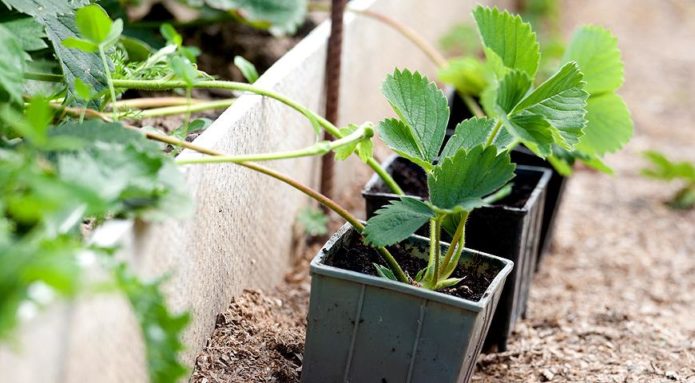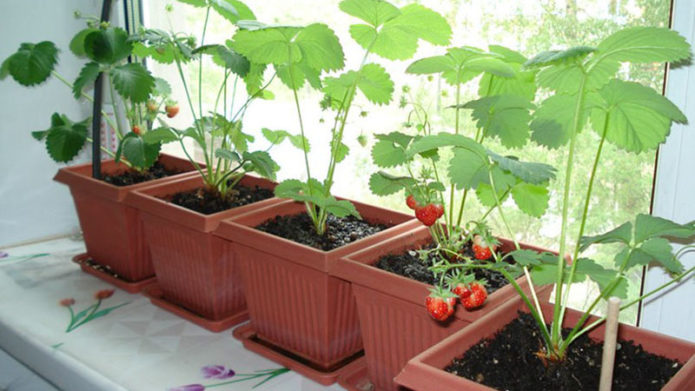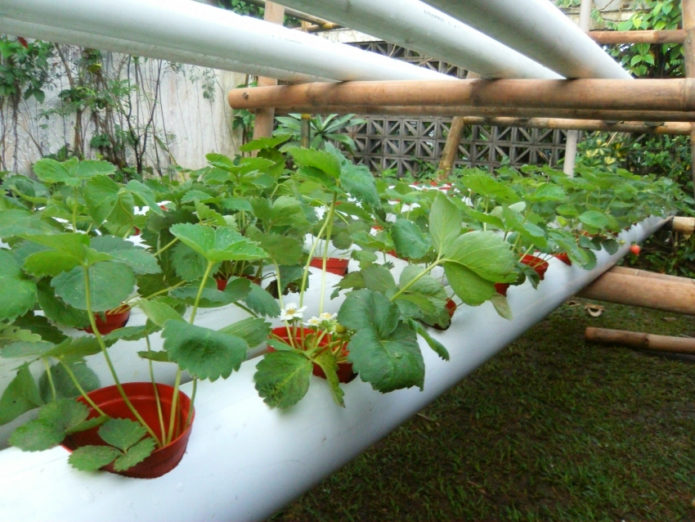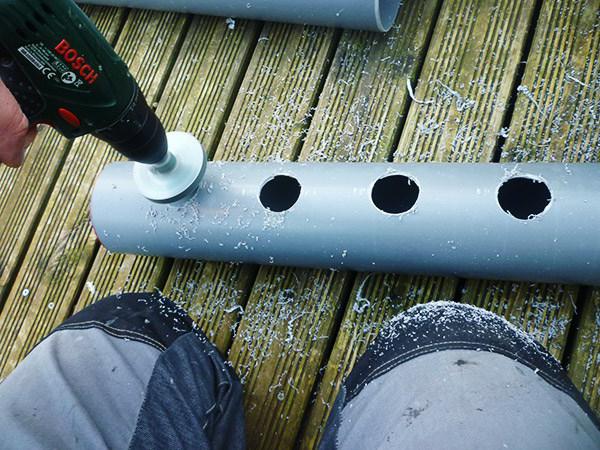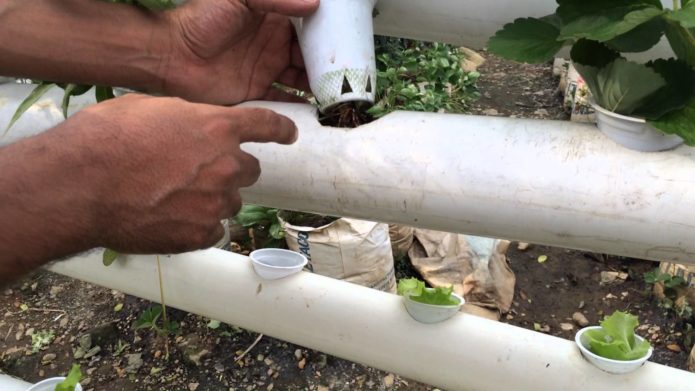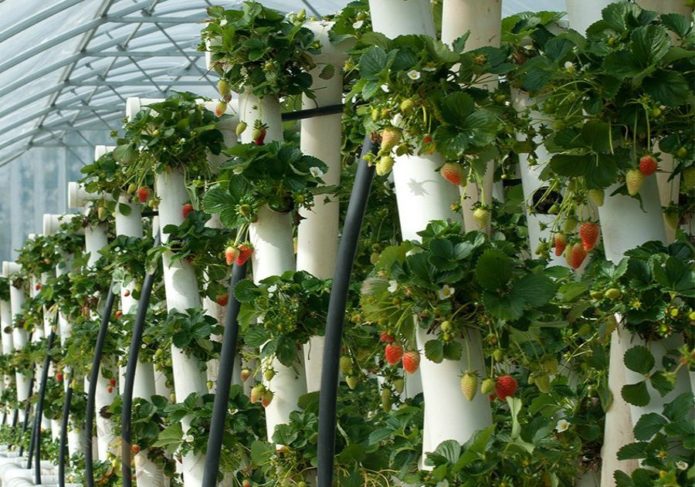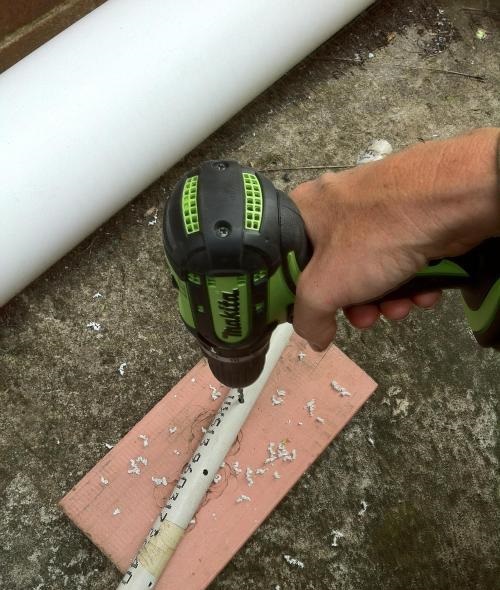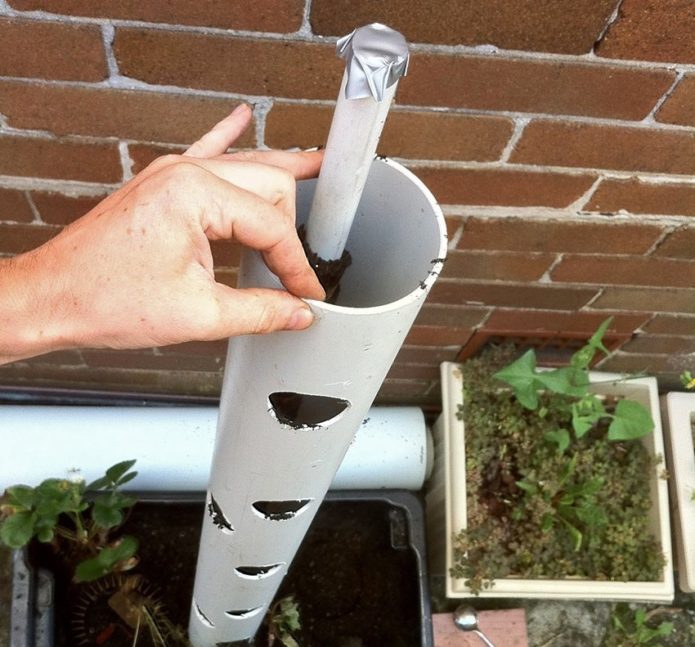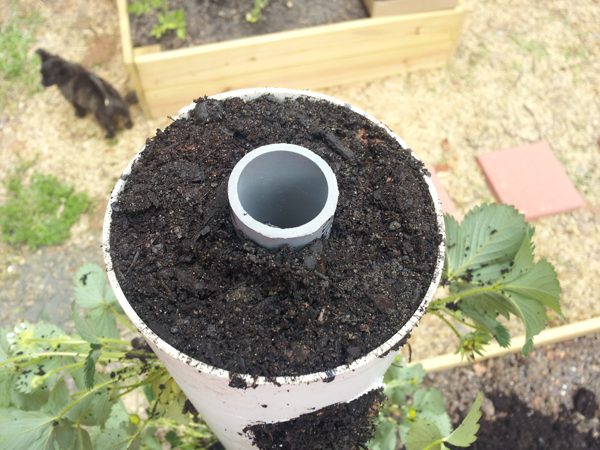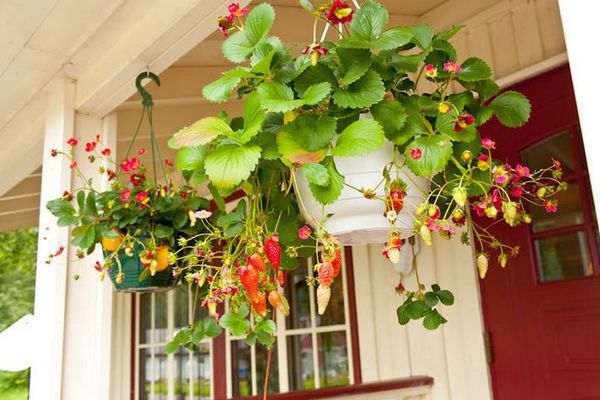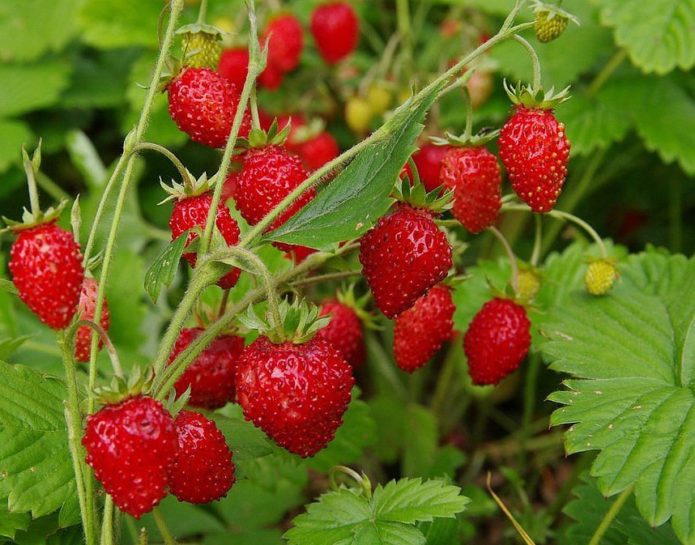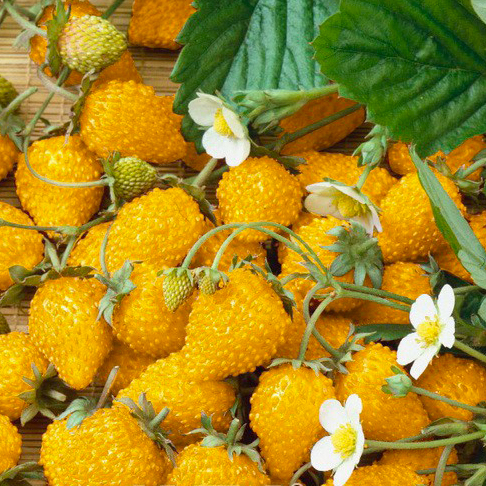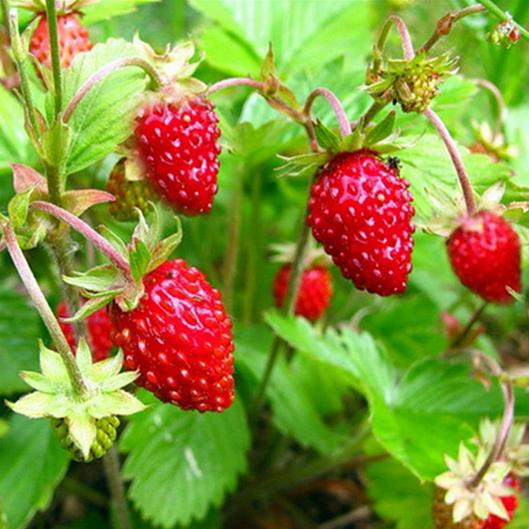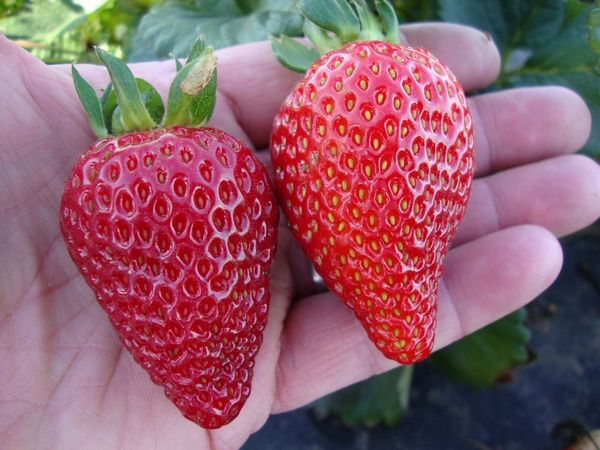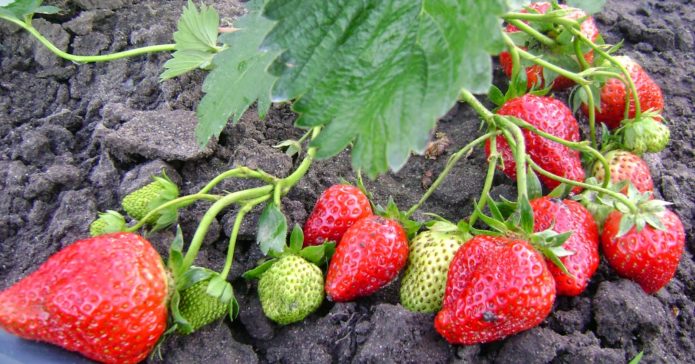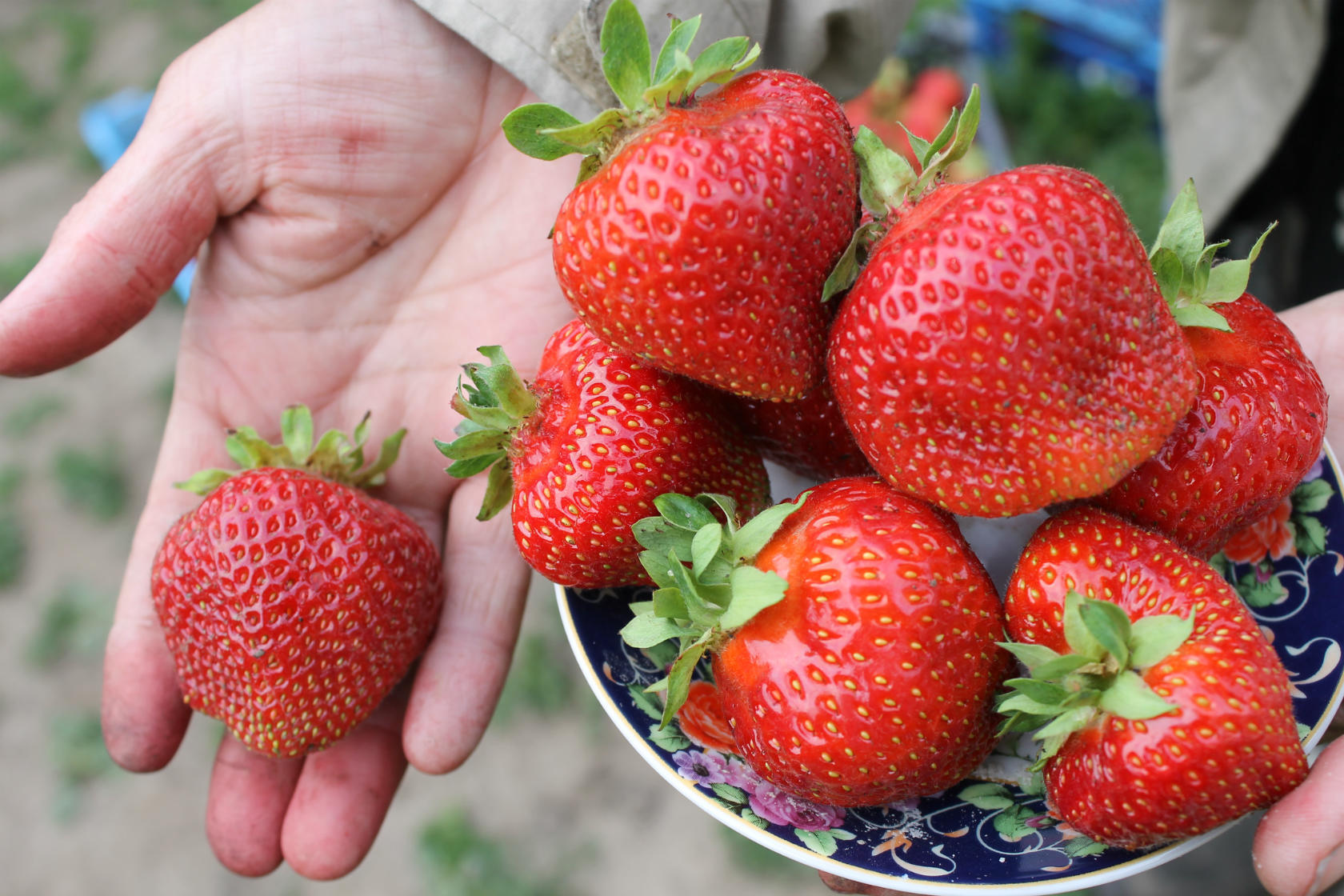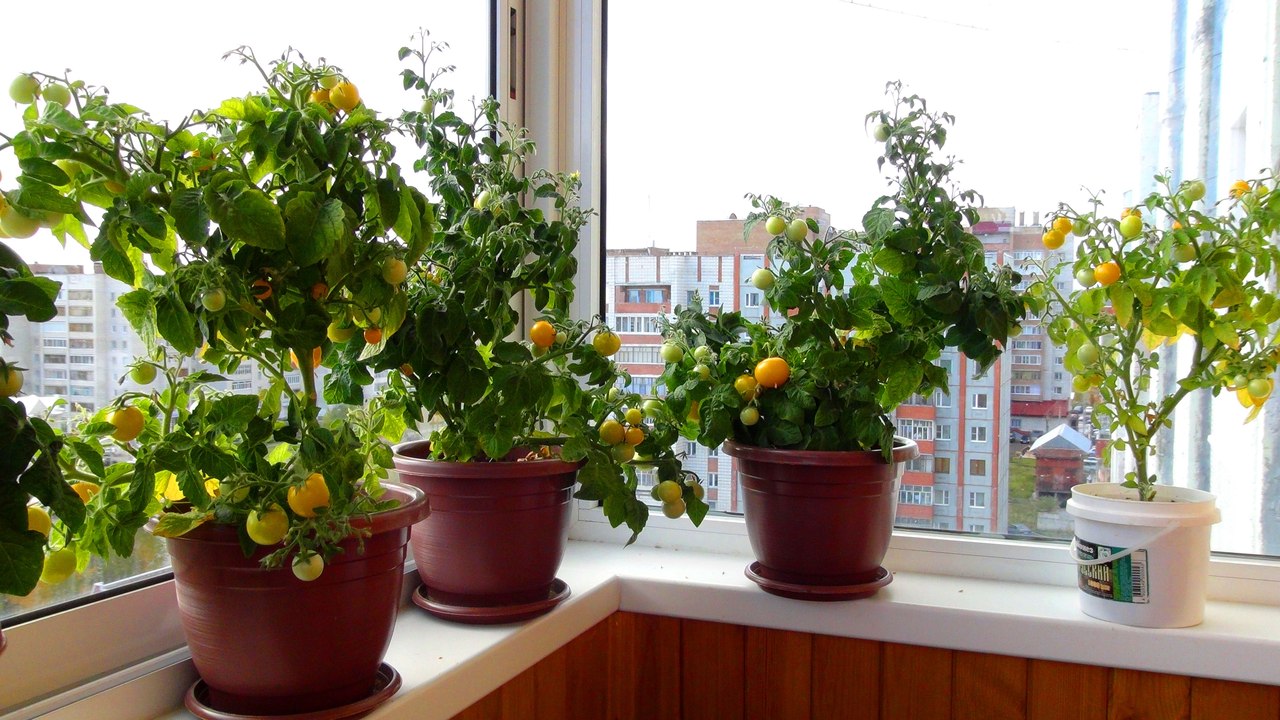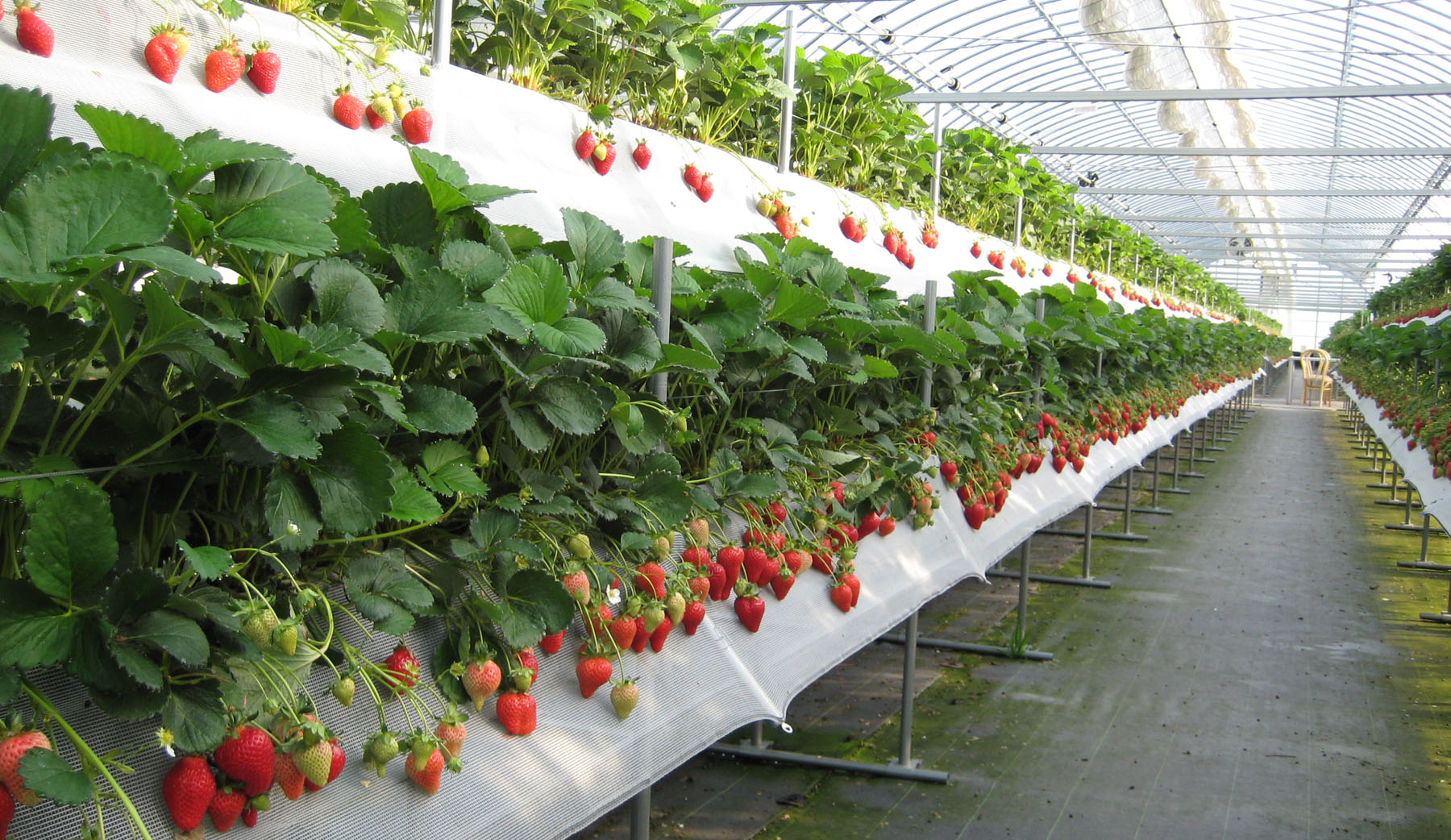Growing a strawberry bush on a balcony or windowsill from a tiny seedling is as easy as shelling pears. But to get a harvest, and even no worse than from the garden, few succeed. However, this can be achieved.
Content
How to grow strawberries on the balcony
For growing strawberries on a balcony or loggia, everything matters: the quality of the seedlings, its variety and even age. Lighting and planting density affect yield as much as soil composition and pot or box size. And, of course, fertilizing and watering, because in a limited space, more water and nutrients are required than in the beds.
Seedling preparation
Success depends to a large extent on the quality of the seedlings. Excellent seedlings can be grown independently from a mustache on the site:
- On bushes that fruited well in the previous year, peduncles are removed.
- The first socket is rooted on the whiskers that appear, the others are cut or plucked out.
- The mother plant is fed with fertilizers with a complex of macro- and microelements. There must be loose, fertile and constantly moist soil under the rooted rosettes. In extreme heat, a bush with a growing mustache is shaded. A strong healthy bush gives from 20 to 80 whiskers, which depends on the characteristics of the variety, and partly on the conditions.
- Rosettes with 4 developed leaves are carefully, without separating from the bush, transplanted into pots with a volume of 0.5 l to 1 l.
- To accelerate the survival rate, a bush with seated children is poured from a watering can with a solution of Zircon (1 ml of the drug per 20 liters of water). Do this in the evening, immediately after planting, instead of watering with clean water.
- The mustache is trimmed 10-15 days after transplanting into pots.
- The seedlings separated from the mother bush are transferred to a slightly shaded place, where they are grown until the autumn cold.
Traditionally, it is customary to propagate strawberries and strawberries by rosettes or by dividing the bush. But some varieties are propagated exclusively by seeds:https://flowers.bigbadmole.com/en/yagody/klubnika/pikirovka-zemlyaniki-iz-semyan.html
You cannot leave seedlings in pots on the street uncovered. Until spring, the bushes are stored in a bright place at positive temperatures. If this is not possible, then they drop them in the garden bed flush with the edges of the pots. They are covered with dry leaves, and with the onset of frost - also with non-woven material.
Frigo strawberry
"Frigo" is the name of a special technology for growing and preparing seedlings for winter storage. It consists in the fact that at a strictly set temperature and humidity, the bushes dug up in the fall are immersed in a deep sleep. Plants do not waste energy to withstand bad weather, but rest comfortably. In winter, they are stored in the refrigerator, and after defrosting, they are immediately planted in cups with a nutrient mixture or in a permanent place.
Such seedlings are often sold in cups. It takes root quickly and gives a high yield in the year of planting.
If the seller assures that the seedlings are "frigo", and there are 2-3 dense leaves on the bushes, then this is doubtful. The fact is that before laying for storage, all the leaves are cut off from the seedlings. And if those on the bushes do not look like those that have just been deployed, there is no point in overpaying. This is a common seedling, planted in cups in the fall.
Real strawberries "frigo" have a stem diameter at least 8 mm at the soil level, those that are thinner are not suitable for freezing.
A separate bush in an apartment bears fruit for no more than 6 months. For the season to last longer, you will need to grow and plant new seedlings in a container with fresh nutrient mixture. For the winter harvest, it is better to take small boxes, which are brought into the apartment with the onset of cold weather.
Planting strawberries
Landing procedure:
- At the bottom of the box, 1 cm of a drainage layer of fine expanded clay or broken brick is poured. The latter is heavy when wet, so the containers will not be easy to lift.
- Sand is added to the soil, and ideally agroperlite. You can save money by replacing some of the perlite with crushed foam. For a bucket of fertile mixture you will need:
- half a bucket of loose humus;
- 4 liters of sifted peat;
- 1-1.5 liters of perlite.
- Seedlings from pots are transplanted into fertile soil without destroying the earthen lump.
The depth of containers for planting grown strawberries should be between 18 and 25 cm. Both wooden and ordinary plastic boxes for balcony flowers are suitable. A standard container holds only 3-4 strawberry bushes. If there are few plants, this is convenient - after transplanting, you can keep them in the apartment on the windowsill for 2 weeks. And with the onset of cold weather, remontant varieties can be brought into the room and enjoy the harvest longer.
In winter, strawberry seedlings grow in small, 0.5 to 1 liter containers. The soil is not needed too nutritious, it is advisable to use a mixture of equal parts of garden soil and peat. The bushes are transplanted into pots with a mixture of humus, peat and vermiculite (5: 4: 1). If you don't know what is vermiculite, it can be replaced with coarse, washed sand.
Shrubs planted in pots are watered more often than in boxes.
Growing in pipe beds
This method is more suitable for heated greenhouses or a heated veranda. It is better to decorate the loggia with hanging pots.
Horizontal arrangement of tiers
The peculiarity of this growing method is that the nutrient solution or water is poured directly into the pipe. It is not necessary to water each bush separately, measuring the volume of the solution.
Procedure:
- In plastic pipes with a diameter of 220 mm, wide holes are made according to the size of containers with strawberries.
- They put pots with plants.
- The containers are usually filled with a mixture of peat and agroperlite. Gardeners sometimes replace expensive perlite with crumbled foam.
The pipes are placed in several tiers. Thanks to them, it is easy to replace the bushes that are already ending the season: just remove the pot from the hole in the pipe and replace it with a fresh specimen that has just opened the first flowers.
Due to the small volume of the pot, plants are replaced every 4 months, and the nutrient solution is poured into the pipes every other day.
Spent bushes can, if the weather permits, be planted in a garden bed.
Features of soil preparation for growing strawberries in bags and pipes:https://flowers.bigbadmole.com/en/yagody/klubnika/kakuyu-pochvu-lyubit-klubnika.html
Vertical beds
The device of a vertical bed is simple. Holes in plastic water pipes (not sewers) need to be made once. And there is such a "bed" for 10 seasons.
Procedure:
- Holes are made in pipes with a diameter of 220 mm and a length of 2 m with a drill with a diameter of 20-30 cm. They are arranged in a checkerboard pattern. The first row - 3 holes at a height of 30 cm from the bottom edge. Each next tier should be 15 cm higher than the previous one.
- In the inner (narrow) pipe through which water is supplied, holes with a diameter of 8–10 mm are made.
- Insert a narrow tube into a wide one.
- Add soil to the pipe and plant the plants in wide holes.
A significant disadvantage of this growing method is that you have to water the plants twice a day. The difficulty is that after the harvest begins to decline or the cold begins, the strawberries need to be harvested and replaced with a new one. We'll have to disassemble the structure, rinse it from the old soil, fill it with new soil.
The advantage of this design is the ability to plant at 1 m2 more than 200 strawberry bushes. Although the harvest is 1.5–2 times less than in a conventional garden bed, the owner will not be at a loss.
Backlight
Since it is difficult to access the sun's rays when growing indoor strawberries, it is illuminated with artificial light sources. For these purposes, the so-called phytolamp is best suited, however, you can get by with a gas-discharge or luminescent lamp.
Fertilizers and feeding
Repaired strawberries need a lot of nutrition to be able to harvest all year round. Other varieties will also benefit from top dressing. Bushes that grow in boxes with soil and humus are fed with fertilizers with microelements, better for strawberries or "berry" ones. The dosage is reduced by 4 times compared to that indicated on the package. Top dressing is done twice a month from the moment the culture is planted on the balcony. In addition, at the beginning of the protrusion of the peduncles and immediately after the end of flowering, the bushes are sprayed with a weak solution of boric acid (2 g per 10 l of water).
You can fertilize strawberries on the balcony:
- infusion of nettle;
- bread yeast solution (20 g per 1 l);
- infusion of compost;
- daily infusion of ash.
The harvest in this case is environmentally friendly. Feeding with boric acid does not make the berries less useful, since the dose of the drug is microscopic. And the berry setting will increase significantly.
The value of fertilizers for growing strawberries:https://flowers.bigbadmole.com/en/yagody/klubnika/klubnika-vyirashhivanie-i-uhod-i-podkormka.html
As for the plants in the pipes, 100 liters of nutrient solution is made for them at once. The following components are added to a plastic barrel of water.
Macronutrients:
- 90 g superphosphate;
- 35 g of potassium sulfate;
- 25 g of magnesium sulfate.
Trace elements:
- iron sulfate - 2 g;
- manganese sulfate - 140 mg;
- sulphate copper - 20 mg;
- zinc sulfate - 20 mg;
- boric acid - 300 mg.
Each substance is first dissolved in warm water (superphosphate - in hot).
The nutrient solution is given in small portions, depending on the weather. In case of extreme heat during the period of berry pouring - in the morning and in the evening.
Video: strawberries on the balcony
Choosing a strawberry variety for growing on the balcony
Varieties and hybrids that bear fruit continuously or have several waves of flowering are divided into large-fruited (strawberries) and small-fruited (alpine strawberries). Most small-fruited varieties do not produce whiskers and are grown by sowing seeds.
It is not necessary to choose between large and small berries, 4-5 varieties can be placed on the loggia at the same time. In hanging pots with a volume of 2-3 liters, ampelous varieties with long, hanging peduncles look beautiful.
Small-fruited beardless strawberry varieties
Small-fruited varieties look like wild strawberries. Saplings are grown from seeds.
If you sow them in February, as indicated on the package, then the first flowers and even berries will appear in the year of sowing.Young bushes emit 1–3 flower stalks, up to 6 fruits each.
For strawberries in an apartment, it is better to sow such varieties in late March - early April. Young plants are provided with a winter dormant period: a cool place with minimal watering and no backlighting. In the spring they are transferred to warmth and watered. The first berries on the windowsill will ripen in May, the bushes will bear fruit continuously, until frost.
In small-fruited strawberries, in contrast to large-fruited, seedlings always retain varietal qualities.
Alexandria
The compact variety Alexandria yields elongated, bright red fruits, weighing 3.5–5 g, sweet, with a slight sourness and strong aroma of wild strawberries. Up to 500 g of fruits are harvested from the bush per season.
Yellow miracle
The variety Yellow miracle has a honey-sweet taste, a weak pineapple aroma. It is a low bushes with small, like wild strawberries, leaves and large, up to 6 g, berries. The shape of the fruit is not uniform. With regular watering, the yield per plant is 400–500 g. The variety is suitable for compacted planting, resistant to fruit rot. Ripe berries do not soften and hang on the bushes for up to 7 days.
Rügen
The old Rugen variety is slightly inferior in taste, but its yield is 500-600 g per season from a compact bush, and the berries are uniform in shape and size. The weight of a single fruit is 4 g. You can harvest once a week. The leaf is dark, glossy. The bush looks very beautiful, especially when strewn with red berries.
Large-fruited remontant varieties and hybrids
Large-fruited strawberries are often grown from rosettes on a mustache, but a seed method of reproduction is also possible.
Fresco
Fresco is a hybrid with excellent seed germination. The berries are not too large, from 18 to 22 g each, individual - up to 25. In the year of sowing, you can see and taste the first fruits. But it is better to cut off the first peduncles and provide the bushes with peace for the winter. On a glazed loggia, grown plants will give 800-900 g of strawberries per bush per season.
There are few mustaches, on some bushes they are not at all. Choosing 2-3 of these, they cut off the peduncles on them. This provokes the appearance of a mustache. From one plant, you can get up to 10 strong rosettes and provide planting material for the next year without much difficulty.
Unfortunately, the hybrid has a drawback - overripe berries are too soft, they have to be cut with scissors instead of plucking. Therefore, on sunny summer days, you need to pick berries every other day.
For the rest - only pluses. The sweet, aromatic fruits ripen without interruption from mid-May to late October.
Albion
Albion has huge, up to 60 g, elongated berries. This hybrid is not to be confused with others. It does not reproduce by seeds, only by a mustache. First, the bush blooms, then the berries appear. Once ripe, it blooms again. And this happens 3 times, and in heated greenhouses - four times per season. Under ideal conditions, the yield is up to 1.5 kg per bush per year. In real ones - from 10 bushes per season, you can get 9 kg per year. Which is also a lot, because 20 bushes grow freely on a 3 m long loggia.
Queen Elizabeth 2
The popular variety Queen Elizabeth 2 bears excellent fruit on the balcony. Such berries are lighter than in the garden, and weigh up to 50 g.
Harvest from a bush per season - 2 kg. In extreme heat, the variety does not form new flowers and ovaries. Taste - from honey-sweet on warm sunny days to sour in cloudy cool weather. Little mustache.
There are some nuances in growing this variety on the balcony. The bush itself is compact, but the peduncles are long, when the berries are poured, they fall on the ground. Therefore, each bush is either planted in separate pots, or narrow plastic boxes with a curved edge are used. The flower stalks with berries will hang down. One plant needs at least 3 liters of soil.
The second subtlety is to remove the first peduncle. The onset of ripening of berries is shifted by 2 weeks, but the fruits will be larger, and the yield as a whole will increase.
Growing strawberries in your own apartment is a feasible task. However, you need to make a lot of effort to get the berry harvest.
